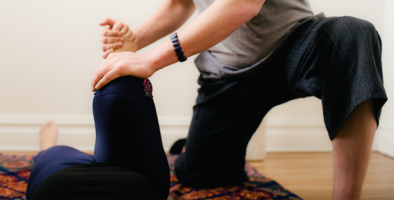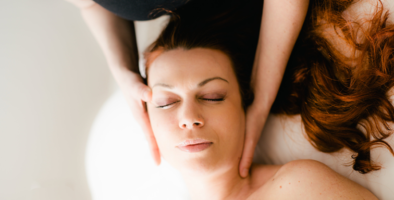5 Reasons to Give Trigger Point Acupuncture a Try
Pain meets its match with trigger point acupuncture.
Ah, pain. It’s not so straightforward. Pain in your hip can cause pain down your leg, neck pain can lead to headaches, and a tiny twinge might mean something more menacing. Figuring out how to effectively treat something that smarts is never fun. Sure, you could pop a few Ibuprofen and wait for the pain to pass, but what if it’s chronic? Taking a painkiller every day doesn’t need to be your end game.
Unlike medications that only mask symptoms, trigger point acupuncture therapy tackles the root of your discomfort by targeting trigger points—tight bands of painful muscle. The treatment involves inserting extremely fine needles into specific points on the body. Trigger point acupuncture is more than just pain management; it’s a holistic approach to health. Here are five reasons to try it for yourself.
- Persistent pain is a big part of your life.
Back pain, neck pain, migraines, tendinosis—if you have any of these conditions, you might be a great candidate for trigger point acupuncture. The needles will cause a localized twitch response, which releases muscle tension, reduces inflammation, and provides relief where you need it most.
- You have a sports-related injury.
Repetitive movements can lead to a variety of sprains and strains. Maybe you develop IT band syndrome from long-distance running, tennis elbow from the repetitive arm and wrist motions, or knee pain from cycling. These repetitive stress regions are prime locales for trigger points. Luckily, trigger point acupuncture excels at providing targeted pain relief. Some trigger point conditions may resolve in one treatment, while others may need five or more treatments for the muscle to reprogram.
- You want to unwind.
Trigger point acupuncture can help you relax, reduce stress, and improve your mental well-being. It triggers the release of endorphins, which are natural painkillers, promoting a sense of comfort and reducing the perception of pain. Even one treatment can impart a sense of calm during and after the session.
- Treatment comes with minimal side effects.
Choosing trigger point acupuncture means opting for a therapy with minimal side effects. Most people have no problems with the ultra-thin needles, which means you can safely pair trigger point acupuncture with complementary therapies without the treatments interacting. (Of course, you’ll want to run any treatments by your doctor.) After a session, you might experience muscle soreness for up to 72 hours, but nothing more intense than you might feel after a hard workout. Making sure to stay hydrated, applying a warm compress and gentle movements can help alleviate this discomfort.
- You want a holistic approach to well-being.
Beyond pain relief, trigger point acupuncture can help you sleep better, feel calmer, and improve your energy and mood. By reshaping the nervous system’s response to pain, it relieves stiffness, enhances flexibility, and boosts blood flow—all things that improve your physical and emotional well-being. Sometimes the technique is called dry needling, which tends to be more Western-based, targeted at particular knots; trigger point acupuncture leans on Eastern philosophies, addressing global pain and generally making you feel great.
Trigger point acupuncture is a powerful holistic pain management tool that can transform your relationship with pain and discomfort. If you’re ready to embark on a journey toward a pain-free you, reach out to our team at Slope Wellness to learn more.




